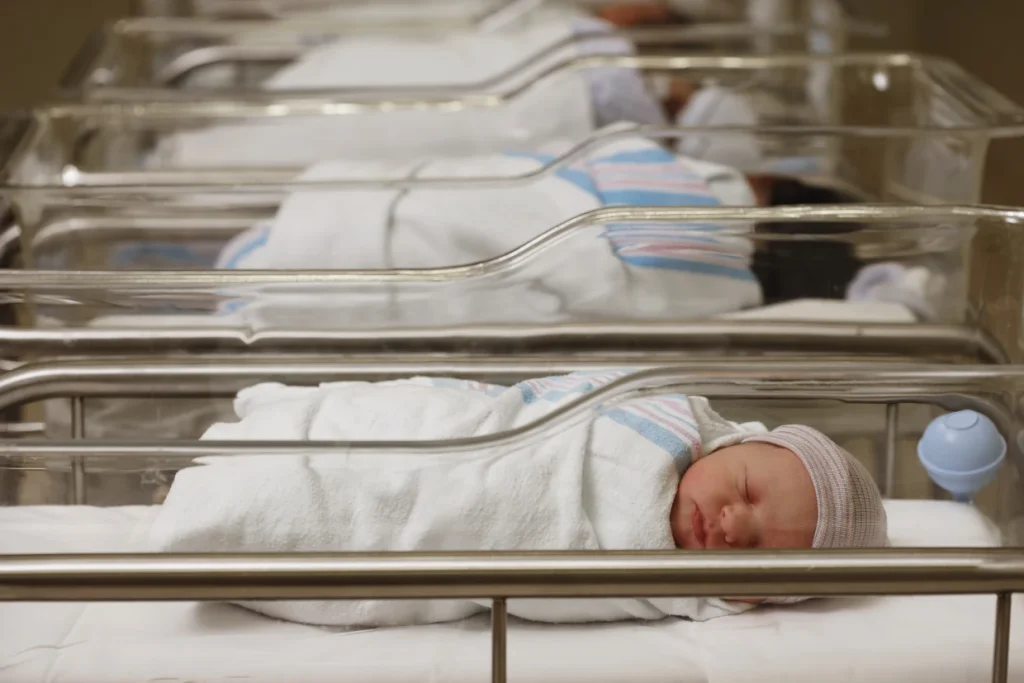The U.S. saw another historical dip in teen birthrate last year, with projections suggesting there may be limited room for further decline, according to a report issued on Thursday by the Centers for Disease Control and Prevention (CDC).
The report found a 3% decrease in teen birthrates in 2022, a smaller contraction than in prior years. Since 2007, the teen birthrate has been reducing approximately 8% annually. Experts suggest this smaller decline might be indicative of a potential plateau, reached due to consistent progress made over the years.
Brady Hamilton, the lead author of the report and a statistician and demographer at the CDC’s National Center for Health Statistics, explained that once the rates in numerous states reach a low point, they flatten out and can’t go much lower. He clarified that the data in the report are provisional and are subject to updates upon the finalization of 2022 numbers.
The marked decline in teen births, which have plummeted nearly 80% since the early 1990s, has been fueled by access to contraception and comprehensive sex education.
Karen Guzzo, director of the Carolina Population Center at the University of North Carolina, Chapel Hill, expressed that the downward trend in birthrates among teenagers and early 20-somethings is positive, as many of these pregnancies are unintended. She believes this suggests individuals are choosing to have children when they are ready.
The report also noted a shift in the timing of childbirth, with an increasing number of individuals opting to have children later in life. Birthrates among women aged 35-39 and 40-44 rose by 2% and 4% respectively in 2022. For women over 45, the birthrate increased by 12%, despite the overall number of births for this age group remaining relatively small.
Joshua Goldstein, the director of the Berkeley Population Center at the University of California, Berkeley, explained that delaying childbirth is a global trend observed in countries with low or moderate fertility rates, like most of Europe. While this is generally viewed as positive, researchers are keen to understand the reasons behind this shift.
The data in the CDC report, collected from over 99% of birth records for babies born in the U.S. last year, indicated that the overall birthrate declined marginally, by less than 1%, in 2022.
Apart from a minor increase in 2021, the number of babies born in the U.S. has been on a steady decline since 2007. Since then, birthrates have persistently been below the replacement level.
Goldstein isn’t alarmed by the dropping birthrates, arguing that it’s not the size of the upcoming generation that matters, but rather the value they can contribute. He emphasized the positive aspect of women having the autonomy to choose when to have children and invest in them.
A question that remains unanswered in the data is the number of individuals choosing to remain childless. Since both men and women are postponing parenthood, understanding whether they’re opting out of parenthood completely will require years of demographic data analysis.
Guzzo noted that the narrative around declining birthrates often focuses on women’s choices, but men are also increasingly delaying parenthood, often due to financial constraints.
The U.S. is also seeing a decrease in the number of women of reproductive age. Feinian Chen, a professor of sociology at Johns Hopkins University, noted that the U.S. population’s age structure is changing, and there are fewer women of childbearing age now than in previous decades.
However, this trend differs among immigrants. The higher birthrates among Asian and Hispanic women compared to American Indian, Alaska Natives, Black, and white Americans can be partly attributed to younger immigrants moving to the U.S. and starting families.
In 2022, births among American Indian or Alaska Native and white women fell by 3%, while those to Black mothers decreased by 1%. Conversely, birthrates among Asian women increased by 2%, and those for Native Hawaiian or Pacific Islander and Hispanic mothers rose by 6%.
According to Guzzo, immigrants have been bolstering U.S. population rates for a long time.
